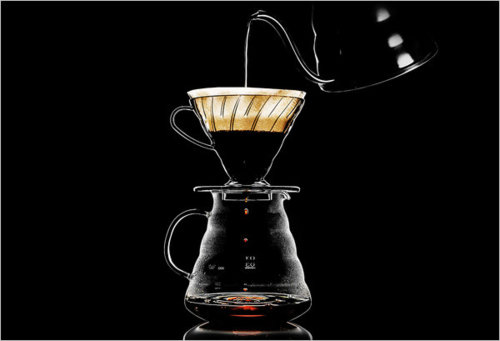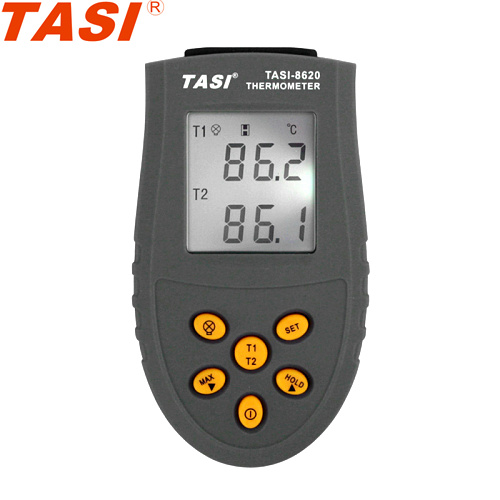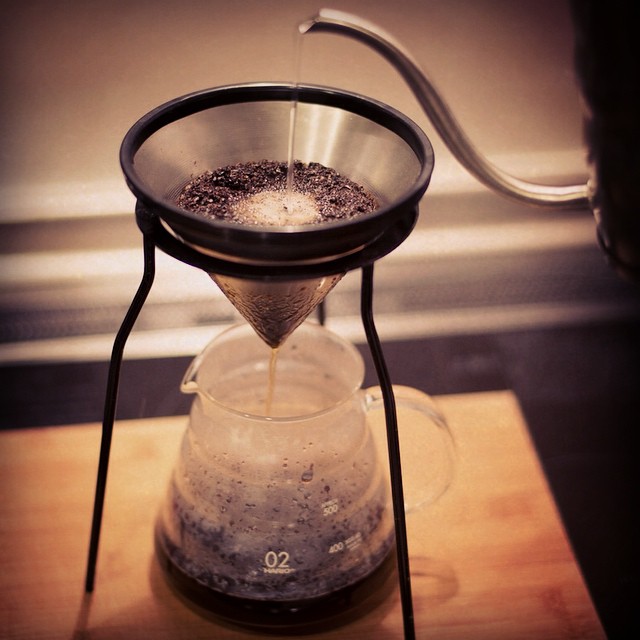Coffee brewing method: basic knowledge of hand-brewed coffee making
Among the many methods of making coffee, hand brewing can not only give full play to the rich and fresh aroma of coffee in taste, maintain the pure taste and rich and soft taste of coffee, and maximize the personality of coffee, but also has the advantages of easy operation, easy to learn and easy to make. The appliance is easy to manage and so on. But this does not mean that hand-brewing coffee is to brew coffee at will without any foundation, nor does it mean that a good cup of coffee can be brewed in any way.
Hand-brewing coffee seems simple, but in fact, in the brewing process, there are certain requirements for brewing mode, water temperature, extraction time and extraction quantity. From a small point of view, the steaming time, the thickness and flow rate of brewing water, the interval time of each water injection and so on will have a subtle impact on the taste of coffee, among many factors that affect the taste of hand-brewed coffee. A change in any small factor will change the taste of the final coffee. There is no standard for the taste of hand-brewed coffee, but the basic requirement of a good hand-brewed coffee is to have fresh aroma, pure taste, no miscellaneous astringency, acidity, bitterness, sweetness and other rich taste and achieve a balanced harmony. after drinking, the aftertaste of the coffee is obvious and clean.

In the past few years, in the process of coffee training in Xiumen, students have also encountered all kinds of problems in the learning process of hand-brewing coffee. I would like to sum up these problems and summarize some basic operational norms according to personal experience and understanding. I hope it can be helpful to those who are beginners in hand-brewing coffee.
(1) posture
Hand-brewing coffee can be said to be a kung fu job, which can be fully reflected in the control of brewing water. Good brewing should keep the water flow fine and uniform, soft and stable, on the basis of maintaining the stability of the coffee powder layer in the brewing process, maximize the extraction of good flavor components to avoid the extraction of bad flavor components. In that case, the most basic thing to maintain a stable flow is to have a good posture, so that you can operate the hand pot more stably and achieve the stability of the current and the stability of brewing.
There is no standard posture in the operation of hand-brewed coffee, according to personal physical conditions, operating habits, bar and operating equipment differences will be different, but the basic operating principle is to maintain a stable, comfortable, easy to operate and beautiful and generous posture.
First of all, keep a good posture. You can maintain an upright posture with your feet about 10 centimeters open, or you can keep your legs together at a 60-degree angle. In addition to standing upright, the legs can also be separated back and forth, with the center of gravity on the front leg to keep stable, and the back leg to help keep the body's center of gravity stable. In short, according to personal physical conditions and habits, it is basic to adjust a stable and comfortable posture before operation.
Secondly, hold the pot with your hand. Here, we should pay attention to keep the water in the hand flushing pot nine percent full, so that it is easy to control the flow. For beginners, the hand punch pot has a certain weight, and the stainless steel handle is easy to slip and unstable, so it is also very important to find a more suitable position to firmly manipulate the hand punch pot according to your own operating habits. it is recommended to hold the upper part of the handle in the position of "lifting the pot" rather than in the position of "lifting the pot". In addition, we should pay attention to the thumb not leaning against the pot wall so as not to burn.
Third, the distance between the pot and the body. During the operation, the body and the bar should maintain a certain distance to ensure that there is sufficient room for movement, but not too far away, about 10 centimeters or so, depending on the individual's situation, and the filter pot is generally placed at a distance of about 10 centimeters from the body at the bar. Too close or too far can not operate freely.
Fourth, keep your eyes on the water flow and the angle of coffee powder. When injecting water with your head down, make sure that the filter and coffee powder are under the vertical control of your eyes, rather than squint at the current or coffee powder.
Fifth, the way of holding the pot when injecting water. Hold the pot by hand, but be careful not to use your fingers or wrists, nor with your forearms. Bring the big arms close to the body and use the strength of the big arms to support the pot to rotate. In the whole process, the forearms and wrists only play a supporting and communicating role. Do not use wrists to support the kettle body, not only the current is easy to tremble, long hours of work will also cause sprain.
In short, the posture of making hand-brewed coffee is not standard, because of the person, because of the height of the bar, because of the size of the hand-flushing pot, it should be adjusted according to specific conditions, as long as it is stable, relaxed and easy to control. and in the preliminary practice of water injection must lay a solid foundation, as far as possible to keep the flow vertical, slender, slow and uniform stable operation.
Last time I talked about the posture of hand-brewing coffee, mastering a good posture is certainly conducive to making a good cup of coffee, because only a comfortable and stable posture can ensure a stable flow of water, so what we want to talk about here is the problem of water flow.
The current is too thick!
The current is too fast!
The current is thick and thin!
The current is always shaking!
The current is always cut off!
This is probably a problem often encountered by beginners.
So how to solve these problems?-practice! Only practice! So how to practice? Here I have sorted out a hand-brewed coffee flow practice trilogy according to the progress of the students' practice and frequently asked questions, combined with my own experience in the original practice.
Step 1: at the beginning of the exercise, the flow should be very fine, very slow, and extremely uniform. Just like practicing martial arts, you have to cheat, squat and squat absolutely firmly, so you should keep the current to the highest standard when practicing, so that you can have a solid foundation so that you can collect and release it freely when making coffee. Well, there is also a limit to the fineness here, that is, at the beginning of water injection, slowly tilt the spout to let the water flow out as a drop, and then continue to tilt to change the flow from a drop to a slightly curved flow, and then continue to tilt a little bit, so that the water is thicker and flows out vertically in a straight line. this is the flow standard required in the initial practice. How slow is it? When watering the kettle, the water flow is used to draw the concentric circle, so the speed of the circle should be as low as possible, as long as the hand flushing pot is rotating. Extremely uniform, including the thickness and speed of the water should be uniform and stable, not fast and slow, thick and thin. According to this standard, if you practice continuously for more than an hour every day, you may get sore hands and arms because you can't adapt to it in the first two days, but remember to stick to it here! Hold on for more than an hour to get used to it! If you stick to it, you can basically stabilize the current in three days, and you can usually feel obvious progress in a week or so: the water can be controlled more finely and evenly, and your hands will not be so sore and uncomfortable.
Step 2: soften the current.
The water flow is basically stable, but at this time, although the water is slender and uniform, it appears to be relatively tense and stiff, so the current is relatively strong, which is easy to wash away the coffee powder and flush out the astringent and mixed taste. Just like after a torrential rain in summer, the ground will be covered with ditches washed out by Rain Water, but after a fine spring rain, the ground absorbs enough water and becomes denser and smoother. The water flow practice at this time should also look for such a feeling, when the water is poured down, feel that the water is gently pounced on the coffee powder instead of pouring it, allowing the water to pass gently through the coffee powder and extract the good flavor ingredients.
Step 3: adjust the current as you like.
Practicing the flow of water is like practicing martial arts. When you can control the flow and keep the soft flow, it shows that you already have some "internal skills". If you want to practice each move according to the formula at the beginning, then you should learn to be flexible after you have mastered all kinds of moves. In other words, for different coffee beans, different grinding degrees, different filters, different freshness, you can properly adjust the thickness, height and speed of the flow. Of course, the adjustment should also have a certain degree, in principle, how to ensure that the flow of water is soft to avoid extraction, and at the same time, there should be a certain degree of strength to ensure that it can be fully extracted. If the first two steps are mainly achieved through a certain amount of practice, then this step not only requires a long time of practice, but also requires the understanding of coffee beans and personal feelings, of course, this feeling also comes from a lot of theoretical accumulation and experience.
This water flow trilogy, in fact, is through the process of approaching the hand-brewing coffee to walking into the coffee, until every cup of coffee can be extracted like a master playing with a sword to extract the "true taste" of coffee, that is, the highest level of water flow kung fu.
Source:
Miss Chestnut's blog
Important Notice :
前街咖啡 FrontStreet Coffee has moved to new addredd:
FrontStreet Coffee Address: 315,Donghua East Road,GuangZhou
Tel:020 38364473
- Prev

Coffee thermometer introduction: TASI TASI-8620 contact K digital thermometer
Parameters: display mode dual-row 3-1pm 2-bit LCD display, maximum readout 1999 input channels-50 ℃ ~ 1350 ℃ (- 58 ℉ ~ 1999 ℉) dual-channel input measurement range-50 ℃ ~ 199.9 ℃: 0.1 ℃; 200 ℃ ~ 1350 ℃: 1 ℃-58 ℉ ~ 199.9 ℉: 0.1 ℉; 200 ℉ ~ 1999 ℉: 1 ℉ measurement accuracy-50 ℃ ~ 1000 ℃ (0.3 rdg + 1 ℃) 10
- Next

Coffee brewing method: introduction to the skills and matters needing attention in the production of Japanese hand-made coffee
Japanese-style hand-brewed coffee seems simple, but in fact, a little carelessness in each step will lead to different tastes of coffee or subtle changes. there are a few points that need to master the basic principles of making Japanese-style hand-brewed coffee and some variables when making Japanese-style hand-made coffee. The following are some points that I have summed up after communicating with many well-known coffee teachers in Chongqing.
Related
- What is the meaning of lactic acid fermentation with coffee bean treatment?
- How to judge the state of foam by sound?
- How does the latte pull out the unicorn pattern? Come to get for a little trick to improve the flower pull!
- Will flower pulling affect the taste of the latte?
- Do you know the history of coffee?
- The difference between honey treatment and sun washing what is raisin honey treatment?
- What kind of milk can a novice use to make coffee foam to keep the foam longer? The correct method and skills of milking tutorial sharing
- Why do washed coffee beans taste sour? Flavor characteristics of washed Coffee
- Introduction to the skill of how to practice the size and height of water injection around the circle of hand-brewed coffee
- How do beginners practice coffee flower drawing from scratch?

